What’s one skill that every person on the planet should know how to do efficiently?
CPR, of course!
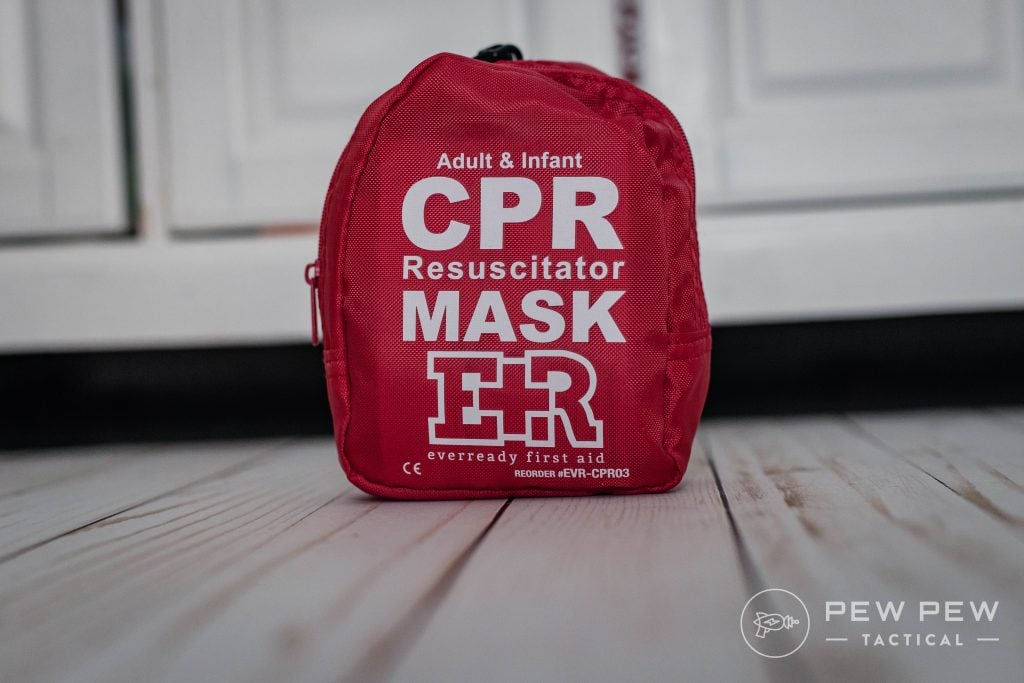
Cardiopulmonary Resuscitation, CPR for short, is performed when the heart stops beating. It’s a lifesaving procedure that can double or even triple the chances that a person survives after cardiac arrest.
According to the American Heart Association, 475,000 people die per year from cardiac arrest in the U.S. So it’s totally possible you might encounter someone experiencing a cardiac episode in your life.
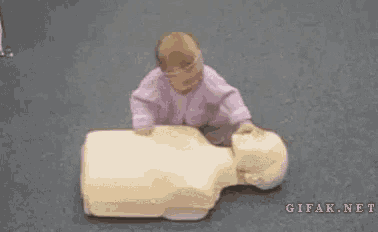
Knowing what to do ensures you can deliver quick, lifesaving help to someone in need.
That said, one of the most common questions people have centers on germ swapping.
In short, if you give someone emergency breaths (a.k.a mouth-to-mouth resuscitation) is there a risk that you could get sick if they are?
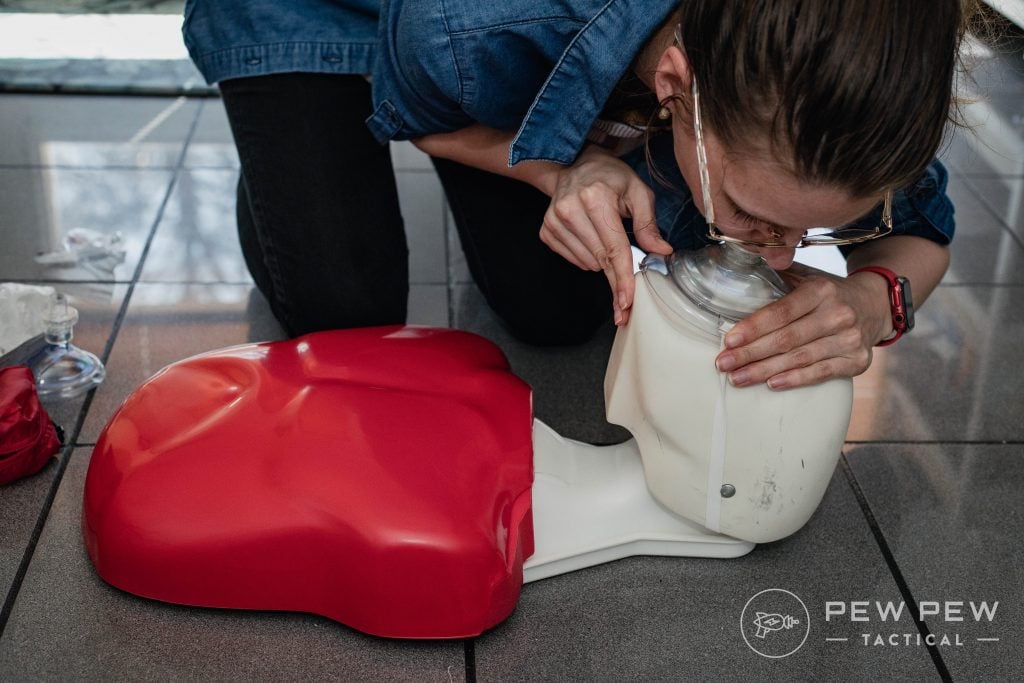
The answer is possibly, depending on what the person carries BUT that’s where some nifty little devices come in.
CPR face masks and shields work to keep you protected from germs while rendering aid.
And today, we’re going to talk about those CPR tools. We’ll go over why they’re used, what types exist in the market, and how to use one.
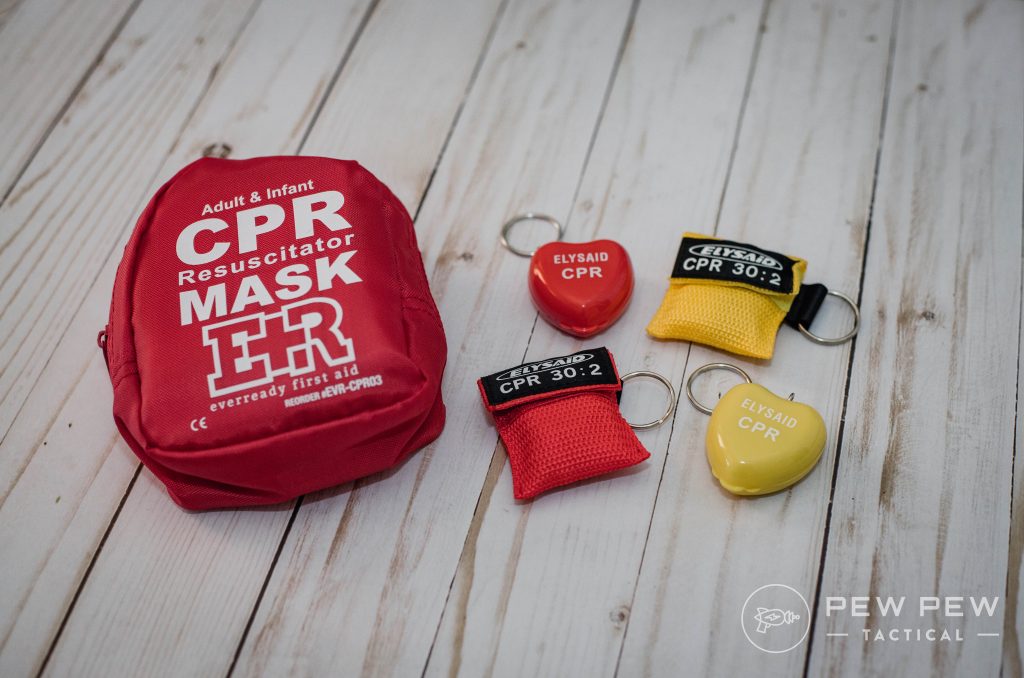
Before we get too far, though, let’s take a beat to offer a disclaimer.
While I, your humble writer, am a certified American Heart Association Basic Life Support Instructor, I am not a doctor. This article should not take the place of actual medical advice or medical training.
Do yourself a favor and when in doubt, consult a physician.
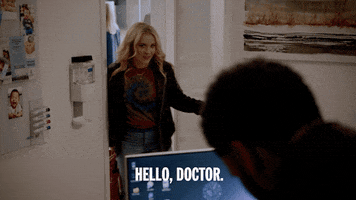
Also, sign up for an approved CPR and first aid course.
We have several stellar courses listed in our Best First Aid Classes for every skill level.
Table of Contents
Loading…
What Are CPR Masks?
Before we dive much further, it’s probably good to cover what a CPR mask is?
Much different than the COVID masks some of us sported in 2020 and 2021, a CPR mask protects the wearer while giving CPR.
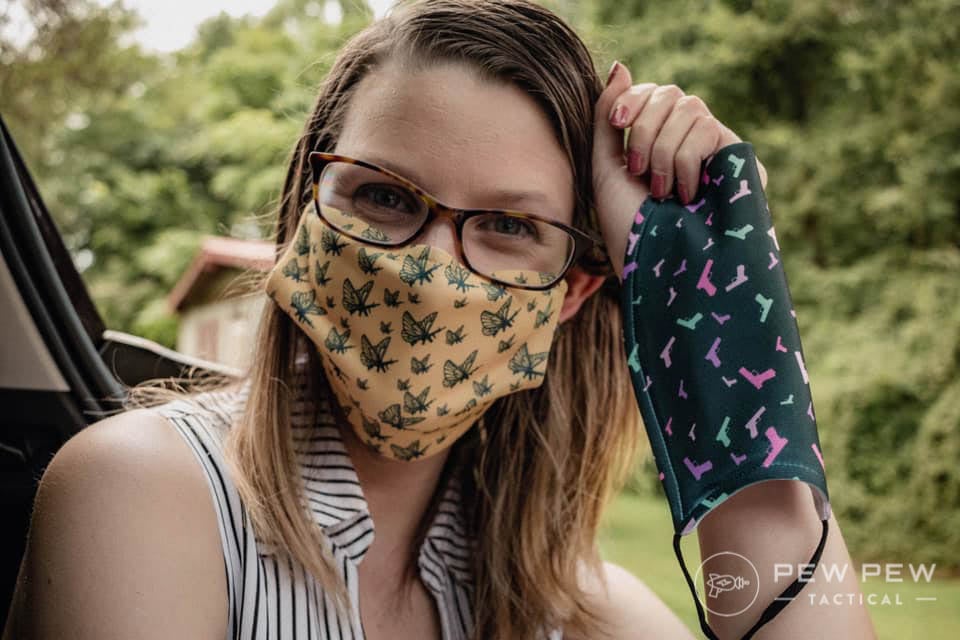
Communicable diseases like HIV and Hepatitis can be transmitted via body fluids. With an unresponsive person at your feet, it’s kinda hard to find out what illnesses they may have.
Not to mention, CPR isn’t always pretty. Sometimes, it causes the recipient to regurgitate their lunch. Yuck!
So, to keep things clean and yourself protected, use a CPR mask – officially known as a barrier device.
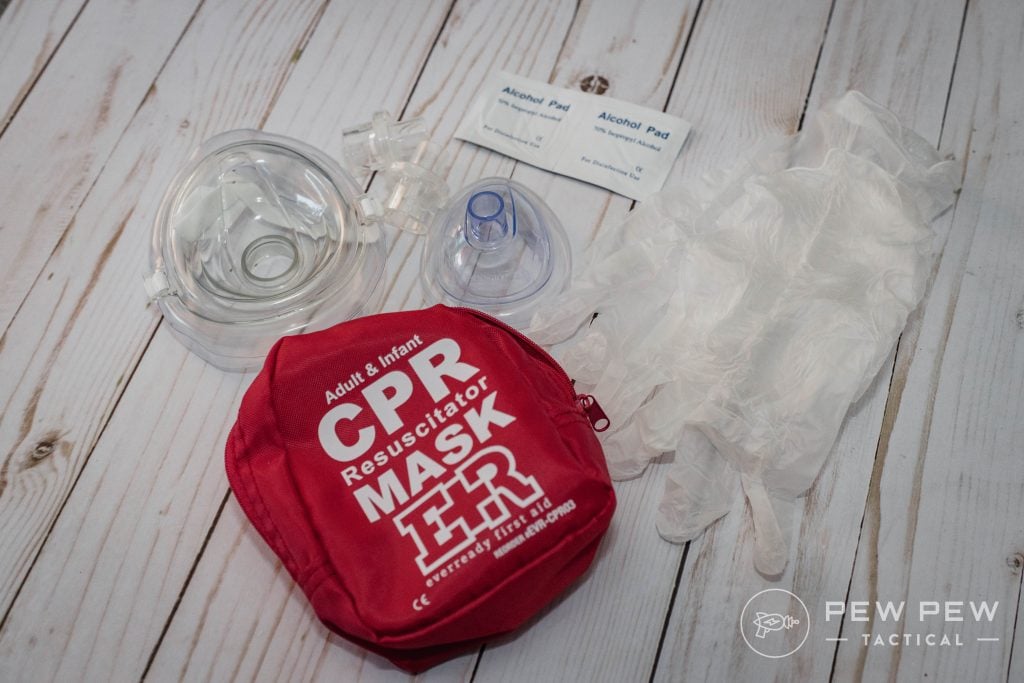
Types of CPR Masks
Now that I’ve convinced you to have a CPR mask on hand…which one should you buy?
If you’ve taken a look at Amazon, you probably notice a couple of styles. So, let’s talk about them.
Plastic Face Shield
The most common and probably most convenient is the plastic face shield. These often fold up very small (keychain size).
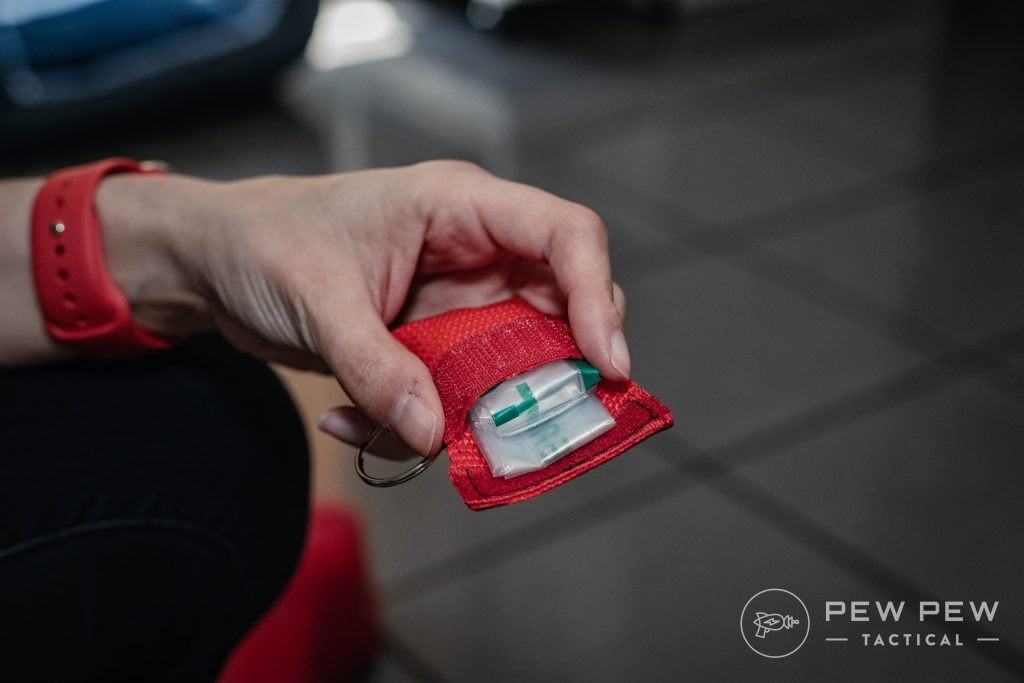
When removed from their pouch, they unfold and can be laid across the face of the victim.
A good face shield will have a one-way valve which you place across the victim’s mouth. This allows air to travel into the mouth of the victim but does not allow transmission the other way keeping you safe.
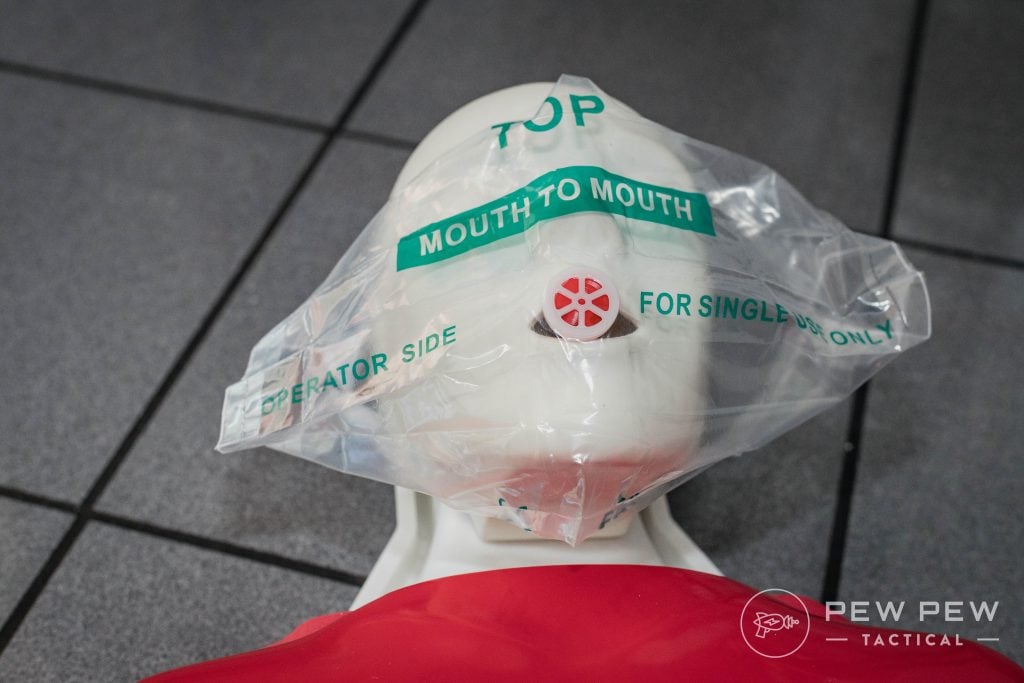
As I mentioned, I carry one of these on my keyring with my car and house keys.
-
25% off all OAKLEY products - OAKLEY25
Copied! Visit Merchant
Face Mask
Another style you’ll commonly see is the face mask. If you’ve watched ER or Grey’s Anatomy and heard, “Bag ‘em,” you’ve seen this style.

Instead of a plastic film, this uses a full on mask that encompasses the nose and mouth.
A small nozzle allows you to blow into the mask and deliver air to the victim.
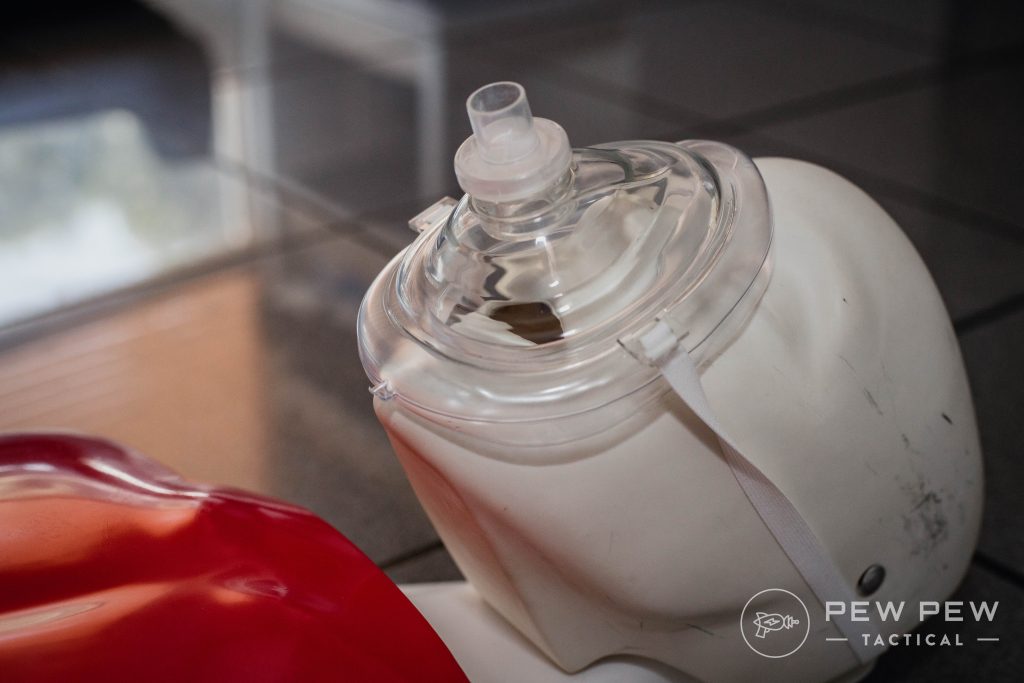
Like the face shield, it features a one-way valve to keep things flowing one direction.
-
25% off all OAKLEY products - OAKLEY25
Copied! Visit Merchant
Are Barriers Really Necessary?
Do you always have to have a barrier device? No, not always.
In reality, most CPR based training has moved away from rescue breaths and instead favors chest compressions.
Studies show that hands-only CPR is as effective as CPR with breaths in the first few minutes after a cardiac arrest.
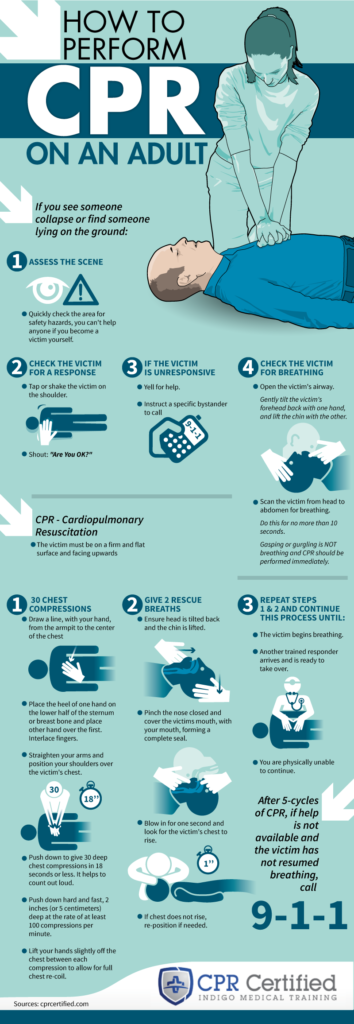
On the other hand, if you happen to be further away from help, or must perform CPR on an infant/child, victims of drowning or drug overdose, or people who collapse due to breathing issues then rescue breaths come into play.
And that’s where barrier devices excel.
If a family member or close relative suffers cardiac arrest and you know they do not have an infectious disease, you’re probably okay to perform rescue breaths without the mask.
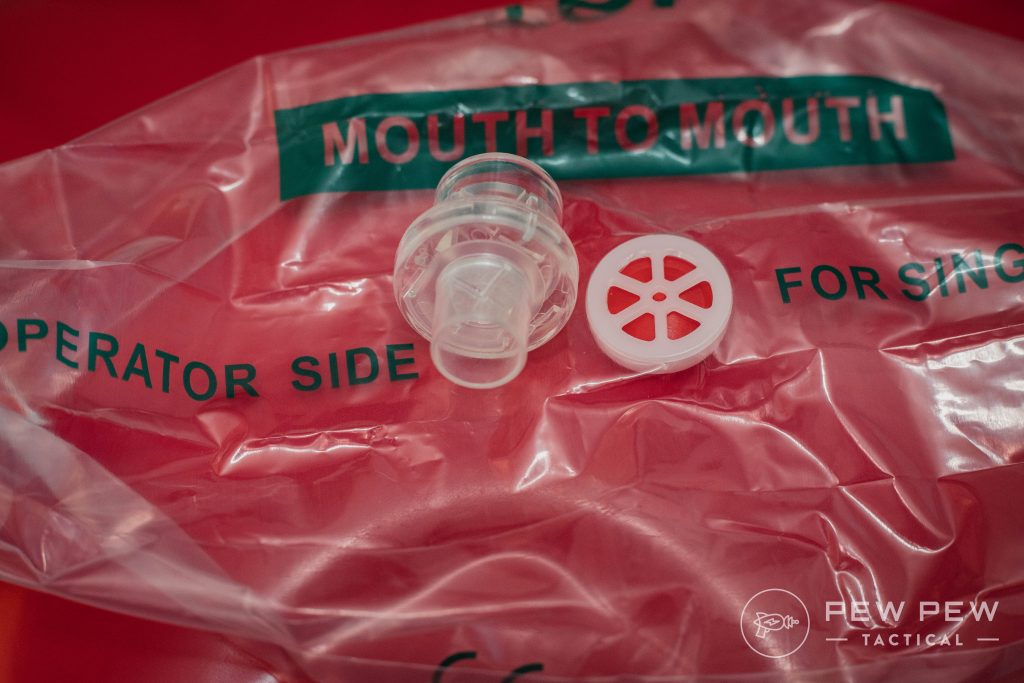
But where these come in handy is when you’re out and about. If someone you do not know undergoes cardiac arrest and you are trained to deliver rescue breaths, a mask is an essential component!
Again, we want everyone to stay safe and a barrier device is the best way to do so.
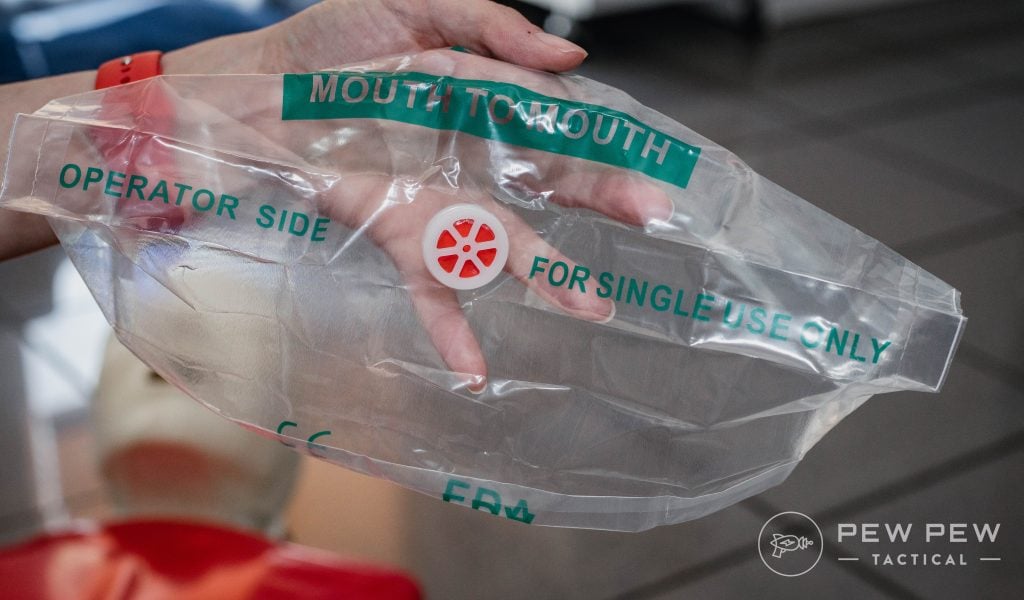
Not to mention, these things are super affordable! Like, under $10 for a pack of two, in most cases. So, there’s no excuse not to carry at least one on you or in your first aid bag.
Where Can I Keep a CPR Mask?
Of course, when someone suffers a cardiac incident, time is of the essence. The key is getting compressions going ASAP. If you know how to properly offer mouth-to-mouth, even better.
In order to speed things up, stow a CPR mask or two in your home and car first aid bags, bug-out bags, and even on your keyring or purse/briefcase/backpack.
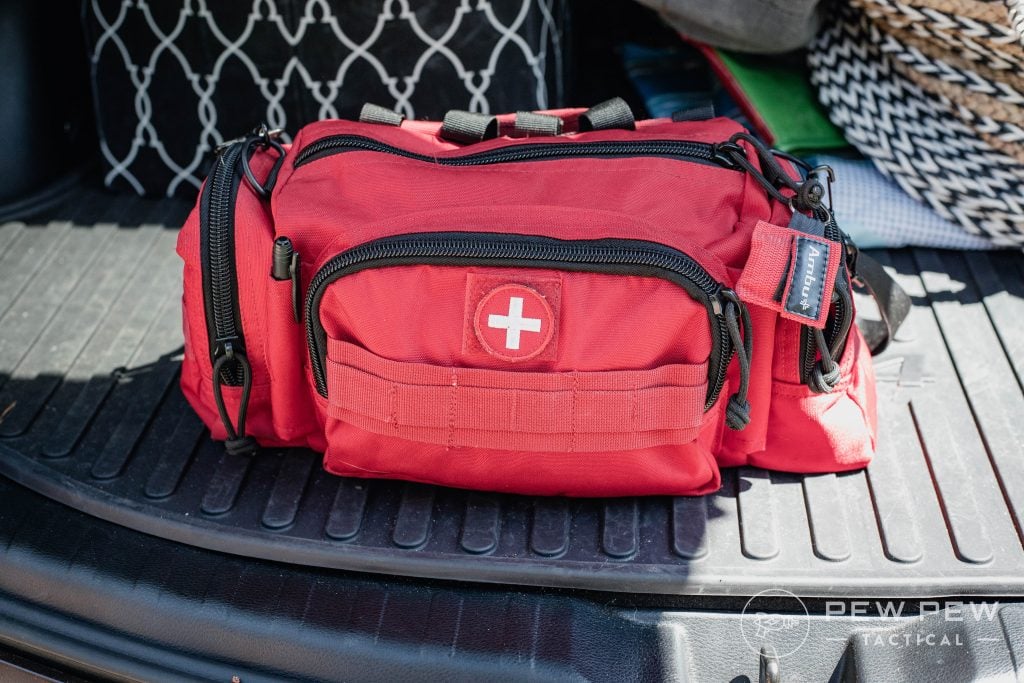
This way, it’s always at the ready.
Personally, I carry one on my keys at all times because I’m never without my house/car keyring. So, if someone has an incident, I am ready to respond and don’t have to dig in my purse.
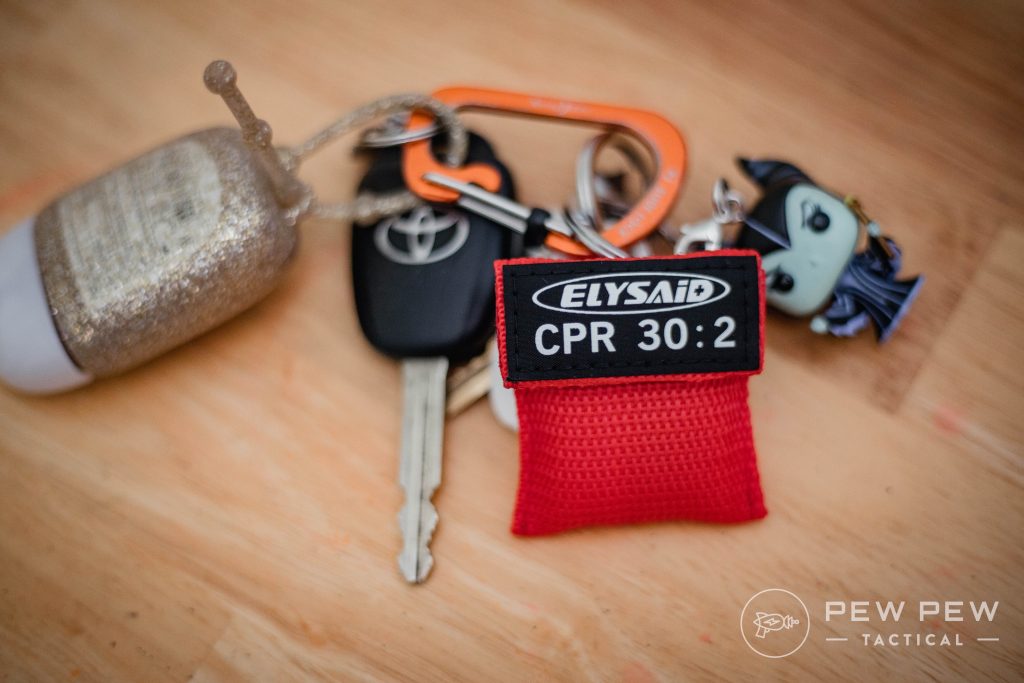
How to Use a CPR Face Shield
Remember before getting started, have someone call 911. If you’re alone, dial 911 and put your phone on speaker phone. Get help on the way!
To use a CPR face shield, first remove it from its pouch and unfold.
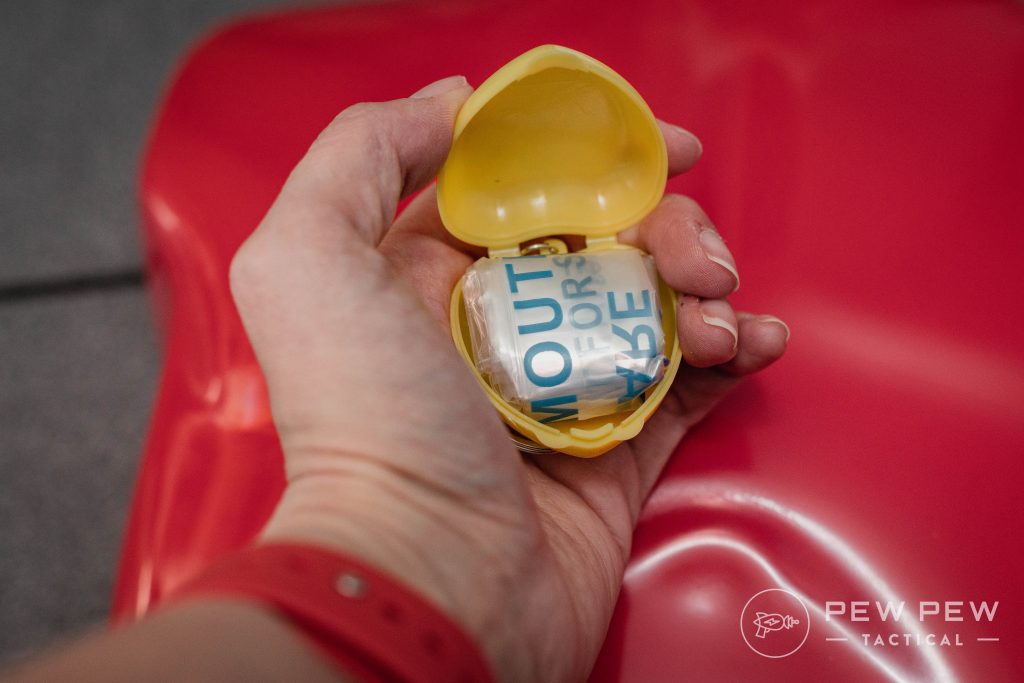
There should be some kind of instruction or indication on the shield as to the proper direction for the one-way valve. Follow these instructions, and lay the shield across the victim’s face so the valve is at the mouth.
From here, standard CPR kicks in – use two fingers under the chin to tilt the head, pinch the nose with your opposite hand, and give two rescue breaths.
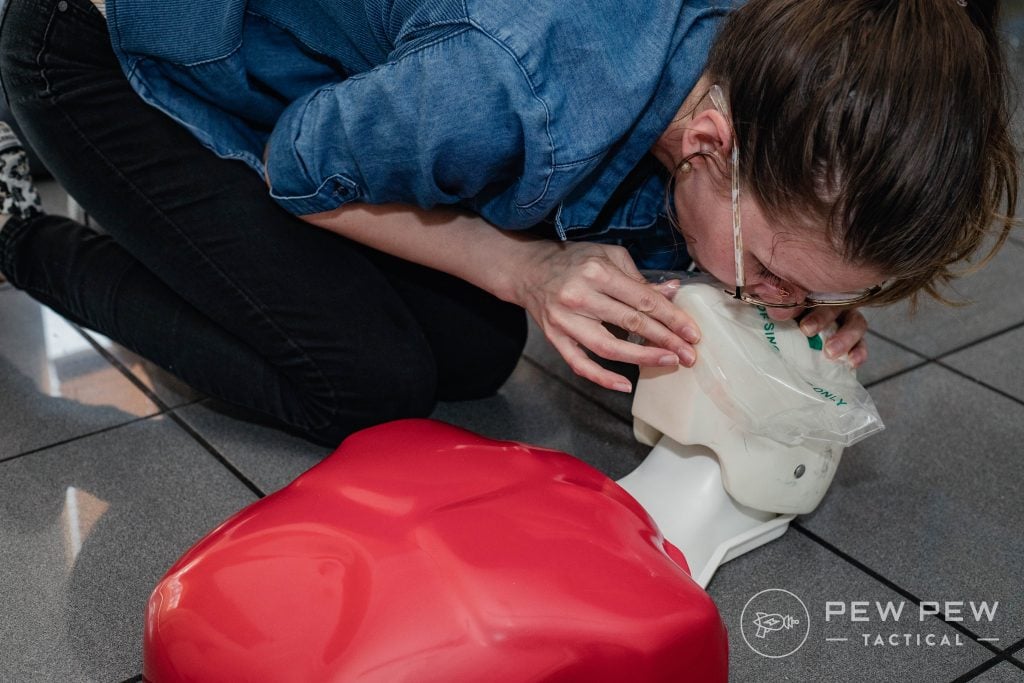
Continue CPR until help arrives.
How to Use a CPR Face Mask
Once more, before starting CPR, have someone call 911. If you’re alone, grab that phone and do it yourself. Speaker phone is a lifesaver!
Again, you must first remove the mask from its carrying case or pouch. Align the smaller portion over the nose and the bigger portion over the mouth.
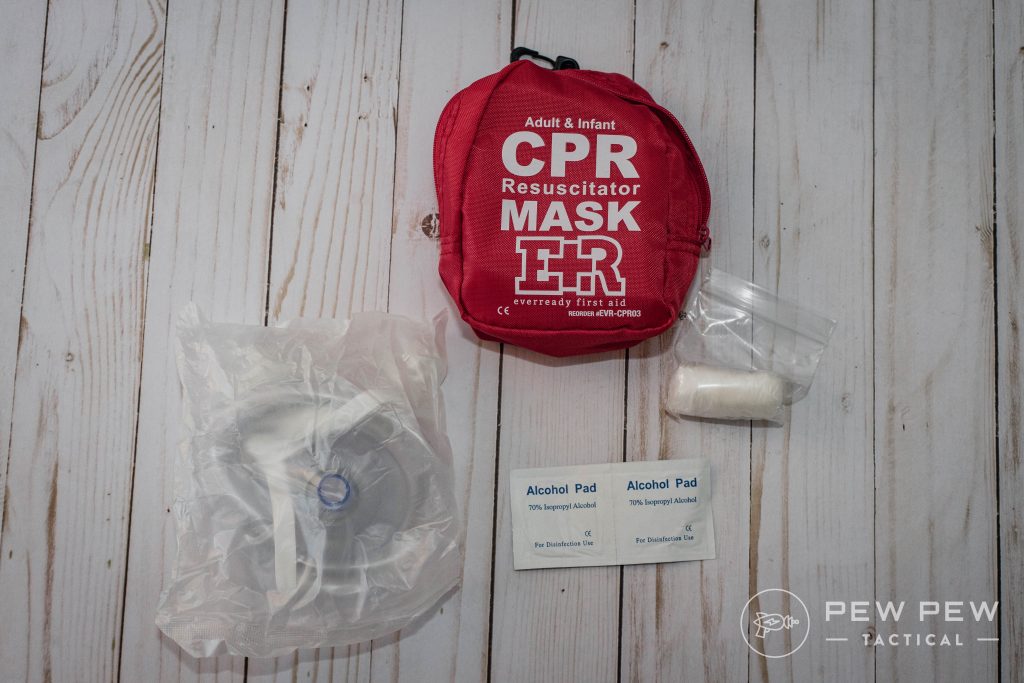
Apply firm pressure to the mask to create a seal. (Otherwise, air will leak out of the sides of the mask.)
Again, standard CPR applies – use two fingers under the chin to tilt the head and give two rescue breaths.
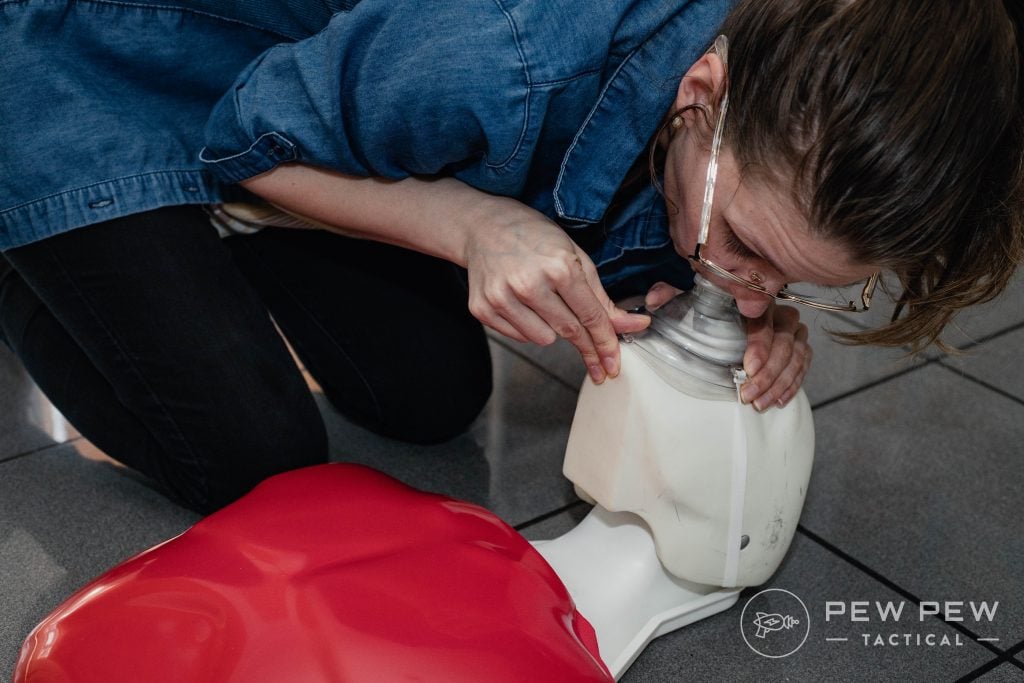
Continue CPR until help arrives.
Conclusion
CPR masks may seem like one extra thing you need in your first aid kit, but trust me, you’ll want it – especially if you ever intend to render aid to strangers.
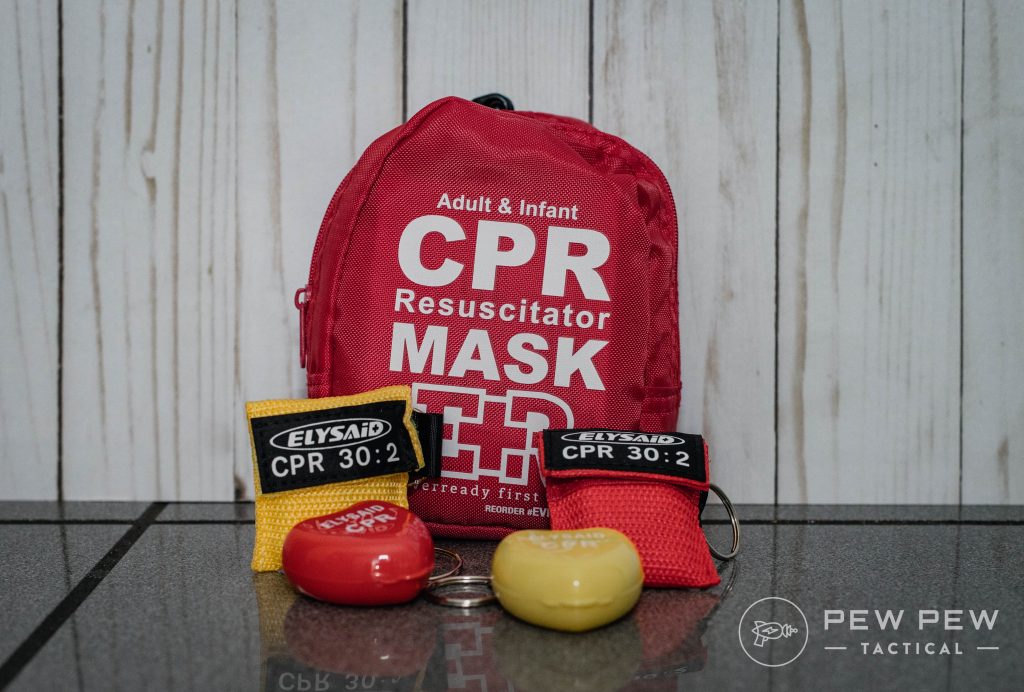
Whether you opt for a face shield or a face mask these keep you and your victim safe.
At the end of the day, make sure you take an approved CPR course and get spun up on how to help.
-
25% off all OAKLEY products - OAKLEY25
Copied! Visit Merchant
Which style do you carry? Let us know in the comments below. To see more essential first aid gear, check out our EDC Medical Kits.

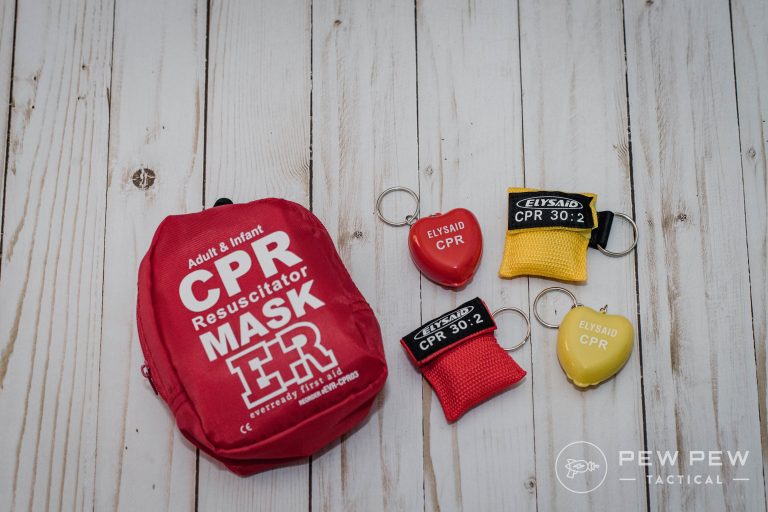
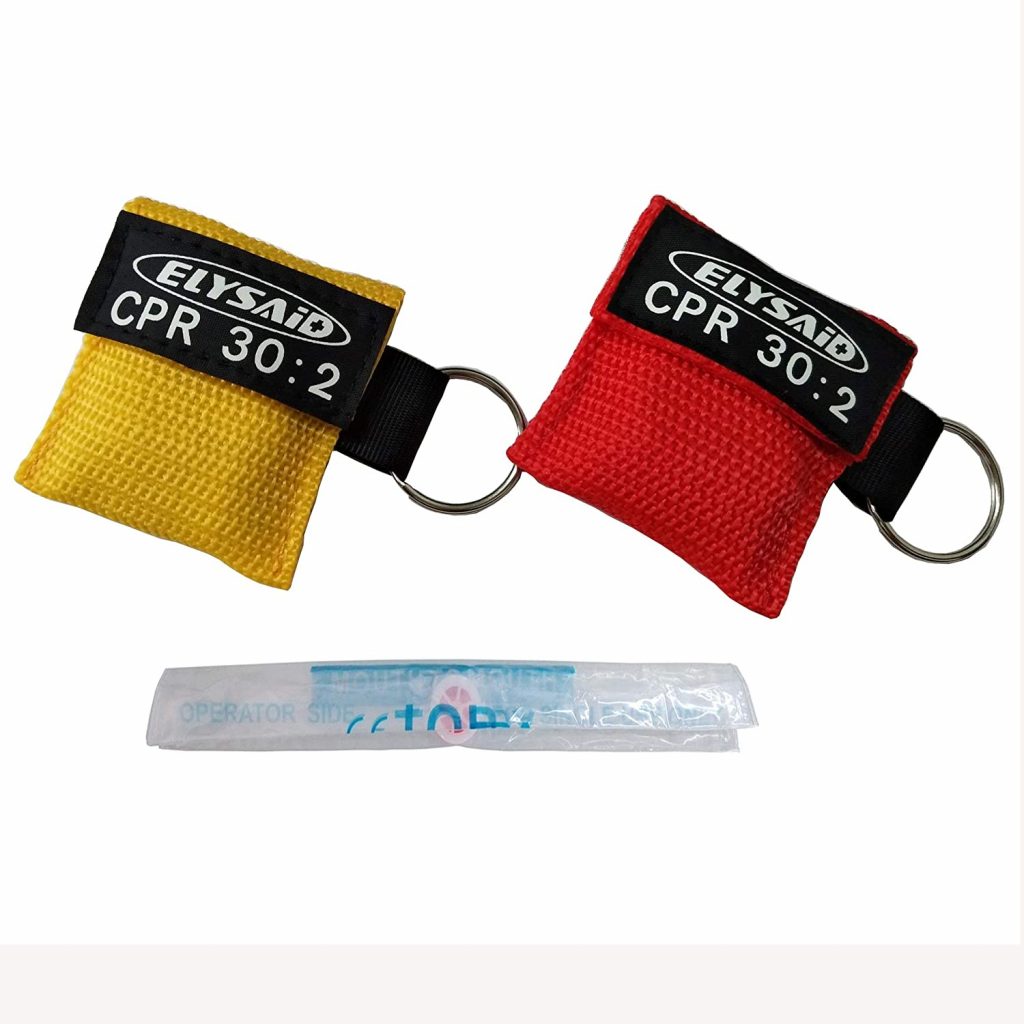









Leave a Reply